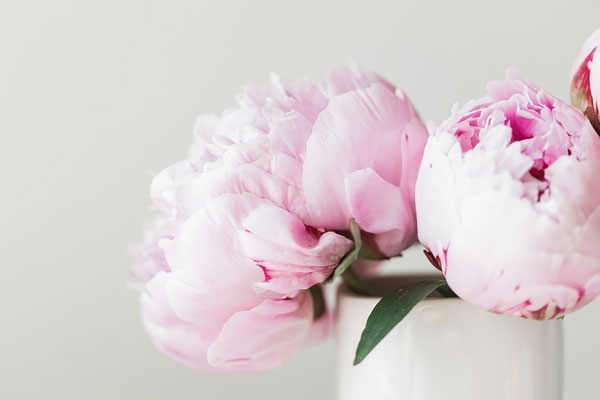K-State horticulture expert shares tips for success
MANHATTAN, Kan. – Many Kansans look forward to the beautiful display of blooming peonies in spring, just before Memorial Day. Peonies also prove to be a favorite pick for gardeners because of how low maintenance they are.
“Though peonies can be left in place indefinitely, many gardeners wish to increase their plantings and use a process known as division to accomplish this,” said Kansas State University horticulture expert Ward Upham.
Division is the process of digging up previously planted plants and separating them into at least two sections at the root ball. Upham said this keeps plants healthy by spreading the blooms and preventing overcrowding, which naturally increases coverage.
Additionally, dividing helps prevent weak stems or bald patches. If either of these signs are present in the garden, it may be an indication it is time to divide, according to Upham.
However, he adds, not every plant is suitable for dividing. Perennials are most commonly divided, which makes peonies an ideal candidate. Traditionally, peonies are divided in the Fall.
“Peonies are essentially dormant by mid-August, even though the foliage is still green,” Upham said.
To divide peonies, first remove the foliage. Then the entire plant must be dug out. As much soil as possible will need to be washed off so the pink buds — known as “eyes” — are visible. Each division should have 3-4 buds.
When planting the new peony divisions, there are a few important factors to keep in mind:
• Ensure the peonies will receive at least a half-day of full sun, but the more sun, the better.
• There should be at least 2 feet between dwarf type peonies or 4 feet between standard types.
• The buds should be planted about 1 inch below the soil surface. If planted more than 2 inches deep, flowering may be delayed or prevented.
• Firm the soil as the plant is set in the ground. Unfirmed soil can settle and pull the plant down.
• Water after planting, and then water as necessary throughout the fall and winter in order to keep the soil moist.
To ensure the new peony divisions last through the winter, Upham suggests adding mulch.
“The alternate freezing and thawing that commonly occurs during Kansas winters can heave weakly rooted plants out of the ground,” he said.
Adding a mulch of straw, leaves, or compost after the soil freezes can prevent heaving and keep plants in prime condition during the harsh winter months.
“Remember, it is not the cold that harms these plants but the alternate freezing and thawing of the soil,” Upham said.
As long as these guidelines are followed, healthy peony divisions can be expected to rise in the spring. Upham said gardeners can expect peonies to return to their full bloom around three years after dividing.
Upham and his colleagues in K-State’s Department of Horticulture and Natural Resources produce a weekly Horticulture Newsletter with tips for maintaining home landscapes. The newsletter is available to view online or can be delivered by email each week.
Interested persons can also send their garden- and yard-related questions to Upham at [email protected], or contact your local K-State Research and Extension office.
-30-
FOR PRINT PUBLICATIONS: Links used in this story
K-State Horticulture Newsletter, https://hnr.k-state.edu/extension/info-center/newsletters/index.html
K-State Research and Extension local offices, www.ksre.k-state.edu/about/stateandareamaps.html
K State Research and Extension is a short name for the Kansas State University Agricultural Experiment Station and Cooperative Extension Service, a program designed to generate and distribute useful knowledge for the well being of Kansans. Supported by county, state, federal and private funds, the program has county extension offices, experiment fields, area extension offices and regional research centers statewide. Its headquarters is on the K State campus in Manhattan. For more information, visit www.ksre.ksu.edu. K-State Research and Extension is an equal opportunity provider and employer.
Story by:
Taylor Jamison
[email protected]
For more information:
Ward Upham
785-532-6173
[email protected]





